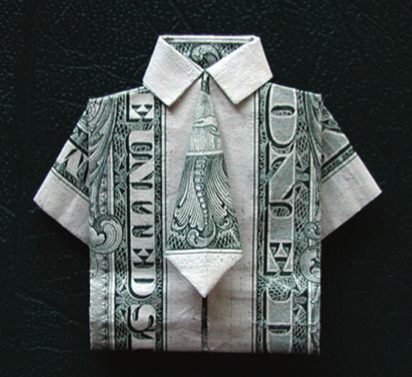High oil and gas prices in recent years have brought windfall profits to companies and natural resource-rich states alike. With a large concentration of two extremely valuable commodities, the Middle East has enjoyed the benefits of its riches but has managed its oil wealth in smarter fashion than in prior oil booms. Based on the precedent set by the Kuwait Investment Authority (KIA), other oil states in the region have created sovereign wealth funds (SWFs) to ensure that oil price downturns do not dry the liquidity available.
Luckily, unmatched price rises in the barrel have added to the coffers of several other regional SWFs, including those controlled by other authorities in the Gulf Cooperation Council (GCC) as well as Algeria and Libya. With extensive pools of capital, SWFs are actively maintaining and building relationships with asset managers who can put their money — estimated at over $1.6 billion for 15 of the 17 ‘official’ SWFs — to work. Some have even speculated that SWFs will replace banks or overtake Wall Street during a US slowdown by providing the debt necessary to finance firms with operations stuck in the turmoil of the credit crunch.
Enter private equity. An excessive capital base of these SWFs has generated the need for financial intermediaries and new asset classes to diversify ownership among several sectors and regions. The appeal of private equity is based in the nature of the asset class as extremely relationship- driven and without regional or sector boundaries. With PE funds offering a bounty of target portfolios, from pan- emerging markets to US-specific funds to pan-industry or industry-specific funds, the available choices are immense and allow limited partners (LPs) to weigh in during fundraising.
Private equity fund managers are, in turn, attracted to the opportunity to work with SWFs as their investment philosophies — to maximize returns and add value to assets to be exited in a few years over an investment with a longer time horizon — are parsimonious with their own views. In what has blossomed to be a complementary relationship, sovereign wealth has become a strong limited partner for private equity funds.
The less-concrete drivers behind this style of partnership between governments and fund managers are illustrated well in a Norton Rose survey of professionals in the industry. Increased activity between SWFs and private equity firms is likely to be through co-investments in deals, by SWFs taking stakes in established private equity managers, and because SWFs will invest directly in private equity funds. With both entities driven towards convergence, PE funds are attracted to SWFs because the latter’s lack of exit pressure allows longer-term investment strategies, which is useful when restructuring a buy can take several years. Additionally, the large blocks of capital in the pockets of SWFs managed under minimally-imposed controls gives SWFs the sort of financial capacity and autonomy needed to build relationships with private equity managers.
Private equity consolidation
An additional component to the relationship is the much- anticipated private equity industry consolidation in the over the next five years. While private equity style investments are not new to the region, which has long experienced the presence of large holding companies with PE-like strategies, the slew of private equity houses that developed in the region over the past decade have driven the idea of the asset class to become more active investment in the investment landscape and future of regional economies.
Unfortunately, the hubris under which the asset class grew and the burgeoning institutions created to foster it contributed to the current industry snapshot: too many firms and not enough performance. Closed funds have had successes and deals and exits information has revealed that the Middle East has some of the most under-valued potential in the developing world, but the lack of exits and lengthy fundraising periods have signaled that something in the industry of efficiency is amiss. Experts attribute this to the overwhelming growth in private equity firms, many of which have made only modest debuts. For regional private equity shops, building and maintaining a rapport with one or several SWFs is essential for long term survival.
Without open balance sheets, one can only speculate on the extent to which private equity firms are partnering with SWFs, but new funds are only likely to deepen relationships between SWF managers and those of private equity funds. Bahrain’s Mumtalakat Holding Co. recently launched a $10 billion fund for overseas investment. In an interview with local press Talal Al Zain, the firm’s chief executive, noted that “Mumtalakat has so far concentrated 98% of its investments in Bahrain, in aviation, industrial and communications assets in the Persian Gulf,” but the fund plans to switch its portfolio allocation to 50% in overseas assets outside of the Middle East with annual growth targets of 15%.
In order to channel capital for Western buyouts, Mumtalakat will doubtlessly seek the aid of firm’s with already large presences in the Middle East and North Africa (MENA) region, including The Carlyle Group, Kohlberg Kravis Roberts (KKR), Investcorp, and others. Every week relationships of this nature are mentioned in the financial pages with Oman, Qatar, Saudi Arabia, the United Arab Emirates (UAE), Kuwait and others establishing relationships with local and foreign money managers and holding companies which are in fact conducting private equity-style investments but maintain opportunistic strategies, leaving their firms with less direct names than their more established counterparts.
Deals over the past two years have targeted celebrity investments aimed not only at the underlying value in the assets acquired but the branding associated with some of the biggest names in their respective industries. Dubai’s Istithmar holding company purchased Barneys, a retailer, for $942.3 million in 2007, Dubai World made a $5 billion investment in MGM Mirage, a Las Vegas casino operator, while Kuwait’s own SWFs have purchased stakes in Daimler-Benz, British Petroleum, and other firms
Other opportunities to take direct stakes in Western private equity shops are apparent when Abu Dhabi’s Mubadala Development Corporation spent $1.3 billion on a stake in The Carlyle Group while the Abu Dhabi Investment Authority (ADIA) took a stake in another US private equity firm, Walden Capital.
Although some Western institutional partners have looked to open their exposure to Middle Eastern private equity, the majority of institutional money comes from regional institutions based on the region’s oil wealth. In any Gulf country where the 90% or more of the economy is based on its state-owned natural resource wealth, institutions are essentially sovereign wealth investors, even if their do not carry the grander titles afforded to SWF flagships in the region such as Abu Dhabi Investment Council, SAMA Foreign Holdings, or the Qatar Investment Authority. In a group of six member states in the Gulf Cooperation Council (GCC), there are in fact 13 official SWFs, according to Norton Rose’s survey, with Dubai alone accounting for three, including Dubai International Capital, Istithmar World, and the Investment Corporation of Dubai — with the first two SWFs having estimated assets of $25 billion.
SWF strategies
In an interview with Christopher Balding, an academic who recently published A Portfolio Analysis of Sovereign Wealth Funds as well as a congressional candidate in next month’s US elections, he outlined that SWF strategies are both well-balanced and profit-maximizing, not unlike most investments. According to Balding, “MENA SWFs resemble well-balanced portfolios divided between debt, equity, and alternative investments,” with a similarly diverse geographical reach spanning both developed and emerging markets. Understanding this dynamic makes the argument SWF investments are based on politics utterly impossible to demonstrate. For SWFs and the private equity funds which manage their capital, a buyout in Manhattan or London is based on a desire to control Western assets, but only to the extent that fund managers can exit the asset in an approximate time of five years for a profit.
In an effort to move away from becoming tools of a rentier form of economic patronage, MENA SWFs have diversified “into liquid financial instruments overseas,” according to Balding. However, MENA SWFs have also invested domestically in non-oil sectors in an attempt to diversify their economies in the long run by stimulating infant industries. In Balding’s view, some of the activity has “created some national champion that has moved beyond their domestic environment, but only time will tell whether they can compete beyond their home economy.”
While evidence might point to symmetries in investment style, the majority of sovereign wealth is invested in more stable assets, while SWFs allocate a small percentage to riskier asset classes like private equity in order to diversify geographic and sector locale. “Growth investment does not appear to be a primary concern for MENA SWFs. Judging by their investments, MENA SWFs seem more concerned with capital preservation, diversification, and economic diversification,” said Balding.
Lauded as one of the most influential sovereign wealth funds and certainly the largest, ADIA plays a large role globally as a limited partner, allocating the minimum $200 million buy-in entrusted with fund managers. However, its portfolio reveals a more diversified investment structure with only 10-15% allotted to emerging markets, and even less for private equity (2-8%). By itself, a portfolio snapshot reveals that ADIA is still largely focused on dollar- or Euro-backed investments and economies. A report by the International Monetary Fund (IMF) explains that “most SWFs actively use external managers either to match index returns or to create active risk-adjusted return.” Private equity funds are relishing the partnership opportunities.
























